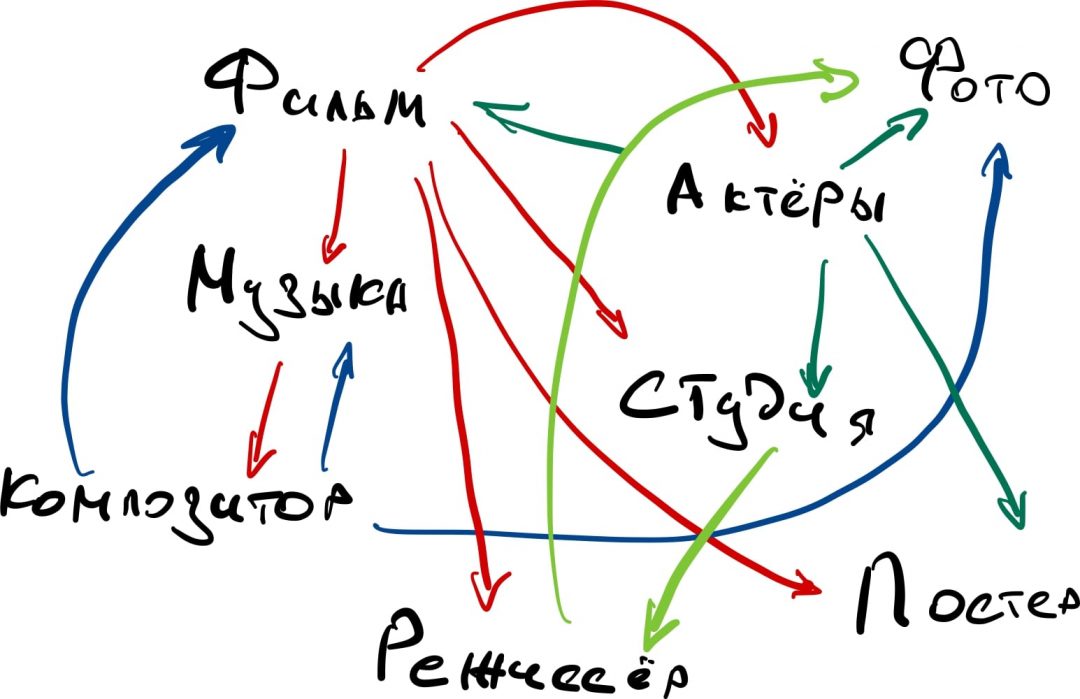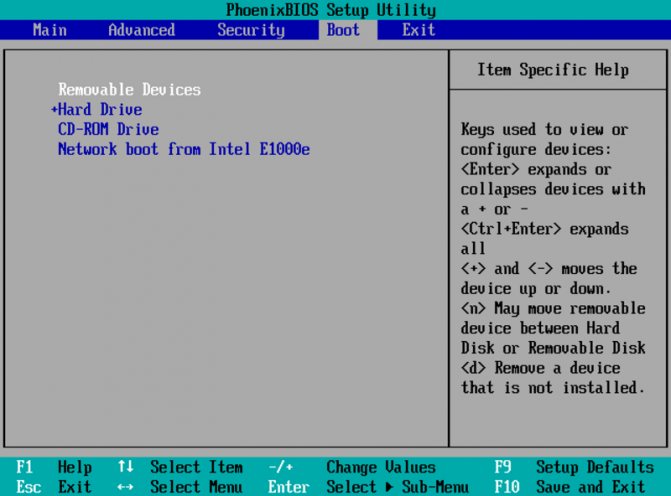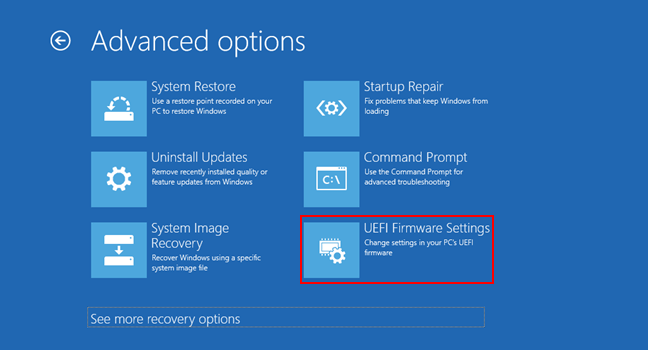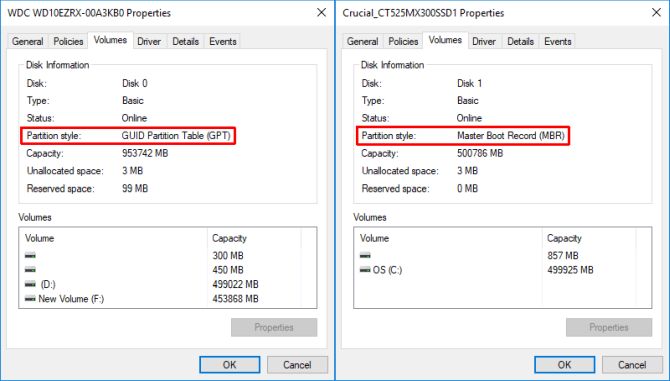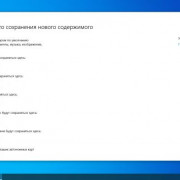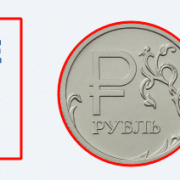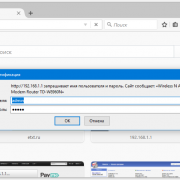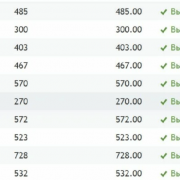Валидация данных в spring boot
Содержание:
- Custom validators¶
- A bit of History
- Используем CSS
- Download and Install the CSS Validator
- Используем JavaScript
- О сервисе проверки CSS
- Что означает W3C?
- Errors and Warnings suppressing
- Source code and package availabilityfor the W3C Markup Validator
- About W3C Software
- The «Philosophy» of the LogValidator
- Contributing
- Что это и зачем
- Misc.
- Заключение
Custom validators¶
We will step through the evolution of writing a length-checking validator
similar to the built-in validator, starting from a
case-specific one to a generic reusable validator.
Let’s start with a simple form with a name field and its validation:
class MyForm(Form):
name = StringField('Name', InputRequired()])
def validate_name(form, field):
if len(field.data) > 50
raise ValidationError('Name must be less than 50 characters')
Above, we show the use of an to do
validation of a single field. In-line validators are good for validating
special cases, but are not easily reusable. If, in the example above, the
name field were to be split into two fields for first name and surname, you
would have to duplicate your work to check two lengths.
So let’s start on the process of splitting the validator out for re-use:
def my_length_check(form, field):
if len(field.data) > 50
raise ValidationError('Field must be less than 50 characters')
class MyForm(Form):
name = StringField('Name', InputRequired(), my_length_check])
All we’ve done here is move the exact same code out of the class and as a
function. Since a validator can be any callable which accepts the two
positional arguments form and field, this is perfectly fine, but the validator
is very special-cased.
Instead, we can turn our validator into a more powerful one by making it a
factory which returns a callable:
def length(min=-1, max=-1):
message = 'Must be between %d and %d characters long.' % (min, max)
def _length(form, field):
l = field.data and len(field.data) or
if l < min or max != -1 and l > max
raise ValidationError(message)
return _length
class MyForm(Form):
name = StringField('Name', InputRequired(), length(max=50)])
Now we have a configurable length-checking validator that handles both minimum
and maximum lengths. When is passed in your validators list,
it returns the enclosed _length function as a closure, which is used in the
field’s validation chain.
This is now an acceptable validator, but we recommend that for reusability, you
use the pattern of allowing the error message to be customized via passing a
parameter:
class Length(object):
def __init__(self, min=-1, max=-1, message=None):
self.min = min
self.max = max
if not message
message = u'Field must be between %i and %i characters long.' % (min, max)
self.message = message
def __call__(self, form, field):
l = field.data and len(field.data) or
if l < self.min or self.max != -1 and l > self.max
raise ValidationError(self.message)
length = Length
In addition to allowing the error message to be customized, we’ve now converted
the length validator to a class. This wasn’t necessary, but we did this to
illustrate how one would do so. Because fields will accept any callable as a
validator, callable classes are just as applicable. For complex validators, or
using inheritance, you may prefer this.
We aliased the class back to the original name in the
above example. This allows you to keep API compatibility as you move your
validators from factories to classes, and thus we recommend this for those
writing validators they will share.
Setting flags on the field with validators
Sometimes, it’s useful to know if a validator is present on a given field, like
for use in template code. To do this, validators are allowed to specify flags
which will then be available on the . Some of the built-in validators such as
already do this.
To specify flags on your validator, set the attribute on your
validator. When the Field is constructed, the flags with the same name will be
set to True on your field. For example, let’s imagine a validator that
validates that input is valid BBCode. We can set a flag on the field then to
signify that the field accepts BBCode:
# class implementation
class ValidBBCode(object):
field_flags = ('accepts_bbcode', )
pass # validator implementation here
# factory implementation
def valid_bbcode():
def _valid_bbcode(form, field):
pass # validator implementation here
_valid_bbcode.field_flags = ('accepts_bbcode', )
return _valid_bbcode
Then we can check it in our template, so we can then place a note to the user:
{{ field(rows=7, cols=70) }}
{% if field.flags.accepts_bbcode %}
<div class="note">This field accepts BBCode formatting as input.</div>
{% endif %}
Some considerations on using flags:
-
Flags can only set boolean values, and another validator cannot unset them.
-
If multiple fields set the same flag, its value is still True.
-
Flags are set from validators only in , so inline
validators and extra passed-in validators cannot set them.
A bit of History
Since 1994 and the
first HTML validator service, there has been a way to check the validity of one’s
webpage with regards to web standards (HTML, CSS, …). Other services, like
HTML Tidy allow you to
(semi-)automatically fix invalid documents…
This tool is here to make your life as a webmaster, web designer, web developer even
easier, by telling you which documents you should fix in priority.
It has first been developed by Gerald Oskoboiny as
an internal W3C tool (yes, even at W3C we create invalid HTML sometimes) to check the
HTML validity of the webpages on the W3C website, then
released its code
in september 2001.
In 2002, the Quality Assurance team at W3C decided to re-write
it as a modular, portable, and easy-to-use tool for webmasters. Its development continues, mostly
with the addition of new processing modules making the Log Validator a very useful and versatile
Web Quality analysis tool.
Используем CSS
В CSS существует четыре специальных псевдокласса, применимых к полям формы: (валидное поле), (невалидное), (обязательное) и (необязательное). Их можно использовать, чтобы добавлять некоторые — хотя и весьма ограниченные — подсказки пользователям, заполняющим форму.
Используя и , мы можем показать пользователю, правильно ли заполнено поле по мере ввода.
Стилизация псевдоклассов и
Однако с этим способом связана одна проблема: стили применяются до того, как пользователь начнёт работу с формой. Поля, обязательные для заполнения, сразу подсветятся нам как , а необязательные — как . Это значит, что пользователь, даже не приступив к заполнению формы, может сразу же получить негативную обратную связь. Не очень-то хорошо.
Стилизация состояний и сама по себе не особо полезна, поскольку эта информация обычно указывается в подписях к полям формы. Однако мы можем объединить эти состояния с псевдоклассами / и стилизовать их комбинации. Например, мы хотим показывать лишь положительный результат, когда валидно обязательное к заполнению поле.
Стилизация по и
Download and Install the CSS Validator
Download the CSS Validator
The CSS validator is available in three different packaging: from Git for developers who want the very latest version,
as a jar archive to build applications and for use as a command line tool, and (since 2009) as a war archive for server-side
applications.
Download the source code
The source of the CSS Validator can be retrieved with Git.
Please note that the online service for the CSS validator is a stable release,
generally a little older than the version under Git, and their results and behaviour may differ.
Download the Java archive (jar)
Installation Guide
The CSS Validation service is based on a servlet written in the cross-platform Java language, and can
be installed on any servlet platform. While the official service from W3C runs under the Jigsaw server
(which is the recommended setup), we will for the sake of convenience describe in this guide the setup
under Apache’s servlet engine, Tomcat, as well as some quick instructions for Jigsaw and commandline usage.
Prerequisites
This guide assumes that you have already downloaded and installed successfully the following:
- a working java environment ;
- the Ant java build tool ;
- a Java servlet container such as Jigsaw,
Tomcat or Jetty, if you plan to provide the validator as a web service.
As a prerequisite to the installation, you will need to know the complete path to the java library called servlet.jar.
It is generally available within /common/lib/, with being the path under which Tomcat is installed. It may also be found under the name servlet-api.jar. If you can not
find it, java.sun.com will have it.
Installation of the CSS validator under Tomcat
- Download the Git source as explained ;
- Edit the file called build.xml and replace the value of
property servlet.lib with the full path to servlet.jar -
You can now build the source : from [VALIDATOR_DIRrun the command ant war.
Running ant should download a number of necessary libraries, and build the archive called css-validator.war. - Copy or move css-validator.war to /webapps.
- Finally, restart the Tomcat engine :"cd ; ./bin/shutdown.sh; ./bin/startup.sh;"
Installation of the CSS validator under Jigsaw
- Download the Git source as explained previously, save it under /WWW
and build source with ant jigsaw ; - Next, configure the root folder for the validator (in most cases it will be called css-validator) to make it a servlet container.
Within your Jigsaw installation, launch the Jigsaw Admin utility, browse to and change it from HTTPFrame to ServletDirectoryFrame ; - The next step will be to create a «validator» resource as ‘ServletWrapper’ class. A ‘ServletWrapperFrame’ frame will automagically
be created for it. You will need to provide the name of the servlet class, which for the CSS Validator os org.w3c.css.servlet.CssValidator.
Note that a file called “validator” may already be present – you MUST rename it, as the validator absolutely needs to enforce this name for the servlet wrapper ; - Make sure that all the .jar libraries within the /WWW/css-validator/lib folder
are properly added to Jigsaw’s CLASSPATH setup. - Finally, restart Jigsaw and point your browser to the validator. The URI should be something like :
http://localhost:8001/css-validator/validator.html
Any computer with Java installed can also run the validator from the terminal/console as a commandline tool.
Download the css-validator.jar jar archive (or build it with ant jar) and run it as :java -jar css-validator.jar http://www.w3.org/.
Используем JavaScript
JavaScript даёт намного больше возможностей для улучшения работы пользователей с формами. Давайте рассмотрим в качестве примера три числовых поля, у каждого из которых установлен минимум в 10, максимум в 100 и шаг в 10 единиц.
Устанавливая атрибуты , и , мы можем быть уверены в правильности значения только тогда, когда пользователь использует специальные контролы числового поля. Но что мешает пользователю ввести вручную некорректные данные? Вот что произойдёт, если он вставит , и в три поля и отправит форму:
Стандартный тултип валидации
В результате всё, что получит пользователь — это сообщение об ошибке для первого поля. Кроме того, в этом сообщении будет указано лишь одно несоответствие из двух требуемых. Такое поведение можно исправить, изменяя показываемые валидатором сообщения.
Добавляем несколько сообщений об ошибках в один тултип
Валидируя поля, браузер проверяет их по определённому списку потенциальных ошибок. В каждом поле содержится специальный объект , включающий в себя список булевых значений, характеризующих ту или иную проверку на валидность. Например, вот такой -объект будет у поля, когда пользователь введёт в него :
Примечание переводчика: Слово «mismatch» переводится как «несоответствие». Поэтому в значениях , и обратная логика: — значение не удовлетворяет атрибуту, — удовлетворяет.
По умолчанию браузер отобразит лишь одну ошибку. Что мы можем сделать, так это проверить все эти значения самостоятельно и, если найдутся ошибки, сохранить их. Как только мы сохраним все ошибки для одного поля, мы можем отобразить весь их список в виде специального сообщения об ошибке при помощи функции .
Теперь при попытке отправить форму мы увидим вот это:
Отображаем несколько ошибок в одном тултипе
Стало лучше, поскольку теперь будут показываться все сообщения об ошибках, связанные с конкретным полем. Однако другая проблема всё ещё не решена: ошибки по-прежнему показываются лишь для первого поля.
Это ограничение валидации, устанавливаемое браузером. Чтобы его побороть, нам нужно пойти другим путём.
Показываем все ошибки для всех полей.
Вместо того, чтобы использовать встроенный тултип, мы можем добавлять сообщения об ошибках напрямую в DOM. Таким образом, все ошибки будут выводиться рядом с соответствующим полем.
Этого можно добиться какой-то парой дополнительных строчек в нашем коде:
Вот что происходит при клике на submit теперь:
Отображаем все ошибки для всех полей в DOM
Используем нестандартные проверки валидности
Иногда встроенной в браузер валидации бывает недостаточно. Нам может понадобиться, чтобы вводимые данные удовлетворяли некоторым дополнительным правилам. Например, чтобы в текстовом поле требовалось указать особые символы.
Так как мы уже проверяем все возможные ошибки вручную в нашей функции , мы можем просто-напросто добавить туда ещё несколько проверок.
Валидация в реальном времени
Хотя текущий способ выглядит намного лучше, он тоже не без изъянов. Наихудший из недочётов заключается в том, что пользователь не сможет увидеть никаких сообщений, пока не нажмёт на кнопку отправки формы. Было бы гораздо лучше, если бы валидация поля происходила сразу же при его заполнении. Можно выделить три правила для того, чтобы с формой было удобно работать:
- Требования для каждого поля чётко видны до того, как пользователь начал печатать.
- Как только пользователь начинает вводить данные, соблюдая требования, он сразу видит индикатор успешного заполнения поля или подсказки, если есть ошибки.
- Нужно отображать сообщения об ошибках таким образом, чтобы пользователь не мог отправить некорректно заполненную форму.
В статье на следующей неделе (оригинал, перевод готовится) я покажу, как реализовать валидацию в реальном времени, переделав вот такую простую форму регистрации:
Пример валидации в реальном времени
Если вы хотите попробовать свои силы (и даже сделать получше), вы можете воспользоваться вот этим шаблоном.
О сервисе проверки CSS
- О сервисе
- Уголок разработчика
О сервисе
Что это? Зачем это мне?
Сервис проверки CSS — бесплатное приложение, созданное организацией W3C для помощи веб-дизайнерам и веб-разработчикам в проверке каскадных таблиц стилей (CSS). Он может быть использован как бесплатный сервис в сети или загружен для запуска на веб-сервере в качестве Java-приложения или сервлета.
Зачем это вам? Если вы веб-разработчик или веб-дизайнер, то этот сервис может стать бесценным помощником: он не только сравнивает таблицы стилей со спецификациями и помогает обнаружить ошибки, опечатки, неправильное использование CSS, но и сообщает о риске возникновения проблем с доступностью контента.
Описание выше слишком путанное! Объясните!
Большинство документов в сети написаны на компьютерном языке HTML. Он может быть использован для создания страниц со структурированной информацией, ссылками, мультимедийными объектами. Для цветов, шрифтов и верстки HTML использует язык описания стилей CSS («Cascade Style Sheets», «каскадные таблицы стилей»). Этот сервис позволяет людям проверить написанные ими таблицы стилей и, если потребуется, внести в них изменения.
Это официальная проверка на корректность CSS?
Нет. Это надежная и полезная утилита, но это всего лишь программа, и, как у любого программного обеспечения, у нее есть ошибки и проблемы & ошибки и проблемы. Актуальный справочник по таблицам каскадных стилей есть в их .
Сколько это стоит?
Нисколько, это бесплатный сервис. Исходный код открыт, и вы можете свободно загрузить его, использовать, модифицировать, распространять — делать с ним что угодно.
Если этот сервис нравится вам, то вы можете или добровольно спонсировать W3C через программу поддержки, но никто не заставляет вас это делать.
Кто написал это приложение? Кто его поддерживает?
Данный сервис размещается и обслуживается на сервере W3C, благодаря вкладу и работе членов W3C, добровольных разработчиков и переводчиков. Для подробной информации смотрите страницу создателей и участников. Вы также можете .
Могу ли я помочь?
Конечно. Если вы программируете на Java, то можете помочь проекту, проверяя, улучшая, исправляя & исправляя исходный , либо добавляя новые функции.
Для помощи в разработке и поддержке вам не обязательно быть программистом — вы можете помочь улучшить документацию, перевести интерфейс на свой язык или подписаться на лист рассылки для обсуждения сервиса и помощи другим пользователям.
Есть еще вопросы?
Если у вас возникли вопросы по CSS или сервису проверки CSS, задайте их в доступных
рассылках и форумах. Но перед этим убедитесь, что ответа нет в FAQ сервиса проверки CSS.
Уголок разработчика
На чем написан сервис проверки CSS? Доступны ли исходники?
Сервис W3C для проверки CSS написан на Java; исходный код открыт и доступен через CVS. Вы можете
посмотреть код в сети, либо скачать его в соответствии с инструкциями. Для быстрого ознакомления с используемыми классами, ознакомьтесь с файлом README.
Могу ли я сам установить и запустить сервис проверки?
Да, можете скачать и установить сервис проверки и запустить его, либо из командной строки, либо как сервлет. Ознакомьтесь с инструкциями по установке и запуску.
Могу ли я построить приложение с использованием данного сервиса? Есть ли API?
Да, и еще раз да. Сервис проверки обладает интерфейсом SOAP (RESTful), с помощью которого достаточно легко использовать его в приложениях (веб- или любых других). Если вы пользуетесь доступом к общему ресурсу, то учтите правила сетевого этикета: убедитесь, что приложение вызывает функцию sleep() между вызовами сервиса, либо установите свою копию.
Что означает W3C?
Аббревиатура W3C (World Wide Web) обозначает сообщество единых стандартов.
Еще со времен зарождения Всемирной паутины этот консорциум определил единые стандарты для всех веб-страниц с целью правильного отображения их различными браузерами.
С развитием Сети между создателями различных браузеров постоянно ведется ожесточенная борьба за первенство.
И были времена, когда разработчики даже пытались внедрить свои собственные стандарты.
Однако первоисточнику удалось сохранить стандарты таких веб-страниц, какими мы видим их сейчас.
И сегодня веб-мастерам остается лишь придерживаться этих правил при создании ресурсов.
Проведение такого исследования является важным этапом работы с целью обеспечения высокого качества страниц любого сайта при отображении на различных устройствах.
В этой статье мы будем много говорить о стандартах HTML, и в связи с этим возникает резонный вопрос: а для чего вообще они были введены?
Первоочередной задачей таких стандартов является обеспечение совместимости.
До их введения разработчики особо не заботились о том, как сайты будут отображаться на других устройствах.
Как правило, веб-ресурс создавался под конкретный браузер, устройство.
Но с развитием технологий пришло понимание необходимости создать единый стандарт языка разметки веб-страниц.
Это делает работу в Сети удобной для большинства пользователей, независимо от того, в какой части света они находятся и какой браузер используют.
Итак, целью утверждения стандартов html является:
- доставить максимальную пользу наибольшему количеству веб-пользователей;
- обеспечить долгосрочную жизнеспособность любого веб-документа;
- упростить код и снизить стоимость производства;
- предоставлять сайты, которые доступны большему количеству людей и большему числу типов электронных устройств;
- продолжать работать корректно по мере развития браузеров и появления новых устройств на рынке.
Errors and Warnings suppressing
You can ignore some errors or warnings by suppressing them.Note! This feature can be used only on , and formats.
You need to specify field in your project file.
Here can be two arrays, for errors () and warnigns().
Values must be a string parts or fully value of «unwanted» message.
Under the hood — node-w3c-validator will use
method for filtering messages.
For example, you receive warning message:
The “type” attribute for the “style” element is not needed and should be omitted.
Now you can suppress it
{"nodeW3Cvalidator"{"suppressErrors","suppressWarnings""The “type” attribute for the “style” element is not needed and should be omitted."}}
Or like this with a part of message:
{"nodeW3Cvalidator"{"suppressErrors","suppressWarnings""is not needed and should be omitted"}}
Source code and package availabilityfor the W3C Markup Validator
The W3C Markup Validator provides Perl/CGI/SGML/XML/DTD-based
validation of a variety of document types.
SGML and DTDs are older technologies that never found wide use on
the Web, so for checking of HTML documents using modern
technologies, you probably want to instead use the
W3C HTML Checker.
To do that,
- Download the
latest release version. - Read the
usage guide.
If for some reason you’d rather run a service based on the same source as
the W3C Markup Validator, this page provides the following information:
Installing from packages
Rather than trying to install and run an instance of the W3C from
the sources, it’s much easier to install one of a variety of
pre-built packages. The sections below provide information about
packages available for various systems.
Fedora/Red Hat RPM package
Fedora RPM packages of the validator are included in Fedora.
The name of the validator package is w3c-markup-validator,
use the standard automated package management tools of the
distribution (such as yum) to install it along with its
dependencies.
For Red Hat Enterprise Linux and derivative distributions, the
w3c-markup-validator package is available in
EPEL.
openSUSE/SUSE Linux RPM package
openSUSE/SUSE Linux RPM packages of the validator are available,
courtesy of Sierk Bornemann, at software.openSUSE.org,
<http://software.opensuse.org/>.
Starting with openSUSE 10.3, the latest stable validator package and all its
dependencies are included in the official stable openSUSE distribution.
The name of the validator package is w3c-markup-validator,
use the standard automated package management tools of the
distribution (such as YaST, zypper, smart,
apt4rpm or yum) to install it along with its
dependencies.
Additionally, you can also get these and other needed packages
from the openSUSE Software Repository at
<http://software.opensuse.org/package/w3c-markup-validator>
Debian GNU/Linux package
A Debian package is available, courtesy of Frédéric
Schütz.
Starting with Debian 3.1 («Sarge»), the package and all its
dependencies are included in the official Debian distribution, and
can be installed by running the command apt-get install
w3c-markup-validator as root.
Mac OS X Application
The Validator is also packaged as a standalone Mac OS X Application,
called Validator S.A.C., courtesy of Chuck Houpt.
Getting the source
The source code for the W3C
Markup Validation Service is available under the terms of the
W3C
Software License.
If you just want to glance at the code, or see its revision
history, you can
browse it
directly in Github.
The most interesting files are currently
a
CGI script called «check» that does pretty much everything,
and possibly also the
httpd.conf configuration file snippet for Apache.
Select the topmost revision numbers on these
pages to see the most recent revision of each file.
To actually install and run an instance of the W3C Markup Validator from
the sources, see the
installation manual.
About W3C Software
The natural complement to W3C specifications is running
code. Implementation and testing is an essential part of specification
development and releasing the code promotes exchange of ideas in the developer
community.
All W3C software is certified Open
Source/Free Software.
(see the license)
html-xml-utils 8.0
2021-05-09 Version 8.0 of
the HTML-XML-utils adds support
for the
(proposed)
and selectors in .
And it fixes a bug in that caused it to fail
on selectors with commas. (With thanks to Bento
Borges Schirmer.)
()
Version 1.19 of b6+
2020-10-31 The slide framework b6+ has a new
feature: If a slide show is opened with a URL with
‘full’ in the query string, the slide show is started in
slide mode instead of index mode. If the URL also contains a fragement
ID, the slide show is opened on the slide with that ID. E.g.:
You can read the manual or
download a zip file
containing the JavaScript file (b6plus.js), a style sheet
(simple.css), the manual (Overview.html) and some images used in the
manual.
()
html-xml-utils 7.9
2020-08-04 Version 7.9 of the HTML-XML-utils fixes a bug in
: a selector with an empty string, such as
, caused a crash. (With thanks to Hugo Peixoto for the report and
the fix.)
()
New documentation for b6+
2019-12-14 The slide framework b6+ (current version:
March 2019) now comes with fairly complete documentation and a generic
style sheet to get started writing slides. The style sheet replaces
the W3C-specific style that was previously used in the
documentation. The slide framework can be downloaded as a zip file containing a
JavaScript file (b6plus.js), a style sheet (simple.css), the manual
(Overview.html) and some images used in the manual.
()
News Archives: , , , , , , , , , , , , , , , , , , .
The «Philosophy» of the LogValidator
Step-by-step quality
Log Validator is a web server log analysis tool with focus on the quality of Web documents.
Thanks to a modular, extensible design, the Log Validator can help Web authors find the most
popular content on their web site that matches particular criteria.
The Log Validator was first written with Validation (HTML, etc.) in
mind : it can thus help web content managers find and fix the most
frequently accessed invalid documents on their Web site, acting as a
comprehensive, step-by-step
validation tool.
What this tool does (and does not)
This tool takes a web server’s last logs and processes it through validation
modules. Those validation modules check the most popular documents’
validity for a certain technology . The default module is HTML validation, but there
are others available (see the for
supported technologies).
The (X)HTML validation module, for example, helps you
find, among the most popular pages on your site, which are invalid, and thus tell you
which (invalid) pages you should fix first. This is a step-by-step process, you can
set up this tool to run every week, and painlessly fix only a few documents at the
time. Eventually, you will have fixed your whole site, or at least the most important
parts of it. (see also for the HTML module)
Contributing
In general, we follow the «fork-and-pull» Git workflow.
- Fork the repo on GitHub
- Clone the project to your own machine
- Work on your fork
- Make your changes and additions
- Most of your changes should be focused on and folders and/or .
- Files such as , and files in folder are autogenerated when running tests () and need not to be changed manually.
- Change or add tests if needed
- Run tests and make sure they pass
- Add changes to README.md if needed
- Make your changes and additions
- Commit changes to your own branch
- Make sure you merge the latest from «upstream» and resolve conflicts if there is any
- Repeat step 3(3) above
- Push your work back up to your fork
- Submit a Pull request so that we can review your changes
Что это и зачем
Валидный HTML-код, валидная разметка — это HTML-код, который написан в соответствии с определёнными стандартами. Их разработал Консорциум Всемирной Паутины — World Wide Web Consortium (W3C). Что именно это значит?
Писать код — это примерно как писать какой угодно текст, например, на русском языке. Можно написать понятно, вдобавок грамотно, а также разбить текст на абзацы, добавить подзаголовки и списки. Так и с валидностью кода. Если вы создаёте разметку, которая решает ваши задачи корректно, то для того, чтобы ваша работа была валидной, в ней стоит навести порядок.
Понятный код — меньше хлопот
Для чего это нужно? Иногда нам кажется, что другие думают как мы. Что не надо стараться объяснять. Но вот нет. Чтобы другие поняли вас быстрее, надо учитывать правила передачи информации. Под другими можно иметь в виду коллегу по команде, а также браузер или компилятор — любое ПО, которое будет работать с вашей разметкой.
Валидность кода определяет то, как будет выглядеть страница или веб-приложение в разных браузерах и на различных операционных платформах. Валидный код по большей части во многих браузерах отображается предсказуемо. Он загружается быстрее невалидного. Валидность влияет на восприятие страниц и сайтов поисковыми системами.
Спецификации кода могут быть разными. Нет универсальной в такой же степени, как и нет абсолютно правильного кода, который работает на всех устройствах и программах правильно. Хотя, сферический вакуумный конь поспорил бы с этим.
Misc.
Testing
x { color: red }
x { color: green }
...
x { color: #eee }
x { color: #000 }
...
x { color: rgb(0, 0, 0) }
...
to get an idea of the implementation status for CSS3 features and to ensure that legal style sheets are not invalidated… Woult not be perfect as the lexical space might be infinite
x { width: 0px }
x { width: 1px }
x { width: 2px }
x { width: 3px }
...
but it is unlikely that there are bugs in this direction, except maybe
x { width: 16385px } /* a */
x { width: 65537px } /* b */
x { width: 4294967296px } /* c */
x { width: 18446744073709551617px } /* d */
...
but these might be special cases… Indeed, the CssValidator does not handle this properly, it validates d but pretty prints
x { width : 1.8446744E19px }
which is not allowed… but that would be out of scope here, as only the pretty printer is affected…
Заключение
Валидация используется для проверки того, насколько продукция, система или процессы отвечают требованиям клиента. В отличие от верификации, где производитель оценивает продукт на формальное соответствие техническим характеристикам, здесь выясняют, выполняет ли он свое предназначение. Технологическая линия может прекрасно выглядеть и отвечать всем требованиям к таким линиям, но выдавать бракованный продукт из-за мелкой и незаметной на первый взгляд неисправности. Валидация же позволяет провести внешний контроль качества.
Объектами валидации может быть широкий круг предметов и явлений – выпускаемая продукция, производственные процессы, программное обеспечение, пользователи платежных систем, навыки сотрудников, системы менеджмента качества и так далее.
Валидация может проводиться на разных этапах: до начала производства или использования продукта, одновременно с началом использования, после получения сведений о том, как продукт, процесс или система ведут себя в реальных условиях в течение какого-либо времени, а также после внесения изменений в процесс производства, после длительных простоев и в других подобных случаях.
Организуют валидацию либо сотрудники входящего в структуру компании отдела менеджмента качества, либо представители сторонних специализированных фирм на правах аутсорсинга.
